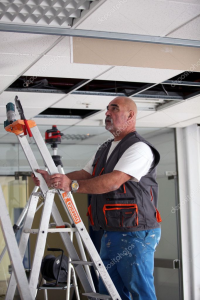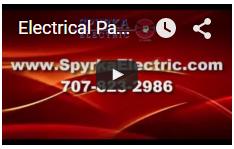If the thought of a home inspection sends shivers down your spine, you’re not alone. However, an electrical safety inspection should not be scary. Unlike finding mold or foundation damage in a house, most of the issues an electrical inspection might uncover are much less costly to correct.
Of course, there’s no price tag on peace of mind that you don’t have a fire risk or electrocution hazard lurking behind the walls. Getting an electrical inspection could literally save your life.
Let’s look at what an electrical inspection involves and what definitely shouldn’t be ignored.
Breaker Panel Inspection
 Every volt of power from the utility company gets fed through the breaker panel, so it’s a good idea to start an electrical inspection here. We want to see clean wiring and correct sizes of breaker switches.
Every volt of power from the utility company gets fed through the breaker panel, so it’s a good idea to start an electrical inspection here. We want to see clean wiring and correct sizes of breaker switches.
Some of the most common code violations or safety hazards that require electrical repairs include:
- Ungrounded wiring
- Double-tapped breakers
- Dangerous DIY wiring mistakes
- Wrong size circuit or breaker
- Unmarked circuits
- Breaker panel is inaccessible
- Water damage or rusted breaker panel
- Burnt or scorched breakers
Basically, if you ever need to flip a breaker, it should be easy to get to. Your electrical inspection should be careful enough to check the wire gauges on every circuit and make sure they’re correctly sized for their uses and connected snugly.
Home Wiring Inspection
The professional tools (and experience) of a licensed electrician make it possible to inspect electrical wiring without needing to rip up walls. Usually just peeking behind a few wall outlets can give a good indication of the health of your wiring.
You can certainly request a more in-depth electrical inspection for wiring throughout the home. If your outlets feel hot, an appliance has gotten fried, or you struggle with issues like flickering lights, perhaps the wiring inside the walls needs to be replaced. More often, though, the wiring at connection points is the most important part of the electrical inspection.
Common wiring mistakes and hazards to look for in an electrical inspection:
- Outlets wired backward (hot and neutral wires crossed)
- Ungrounded outlets
- Frayed wiring or missing insulation
- Spliced wiring not properly covered
- Excessive reliance on extension cords
- Wrong size wiring for large appliances
- Missing GFCI protection
Electrical Inspection for Code Compliance
When electrical codes get updated, some existing systems are grandfathered in—but only until you remodel or make alterations. Examples include GFCI outlets in the laundry room and wet bar and AFCI breakers for living areas.
It’s a great idea to get an electrical inspection and make updates even if not strictly required. The National Electrical Code and the California Building Standards Code make their rules based on what’s safe and reasonable. And if you sell your home, a buyer will want an electrical inspection—so it’s convenient and cost-effective to update preemptively rather than argue about at closing.
Electrical Inspections in Santa Rosa, CA
If you’re in an older home, or a newer one that’s had renovations or added appliances, be prudent with an electrical inspection by your trusted local electrician in Santa Rosa. Contact us to schedule an electrical safety checkup.

